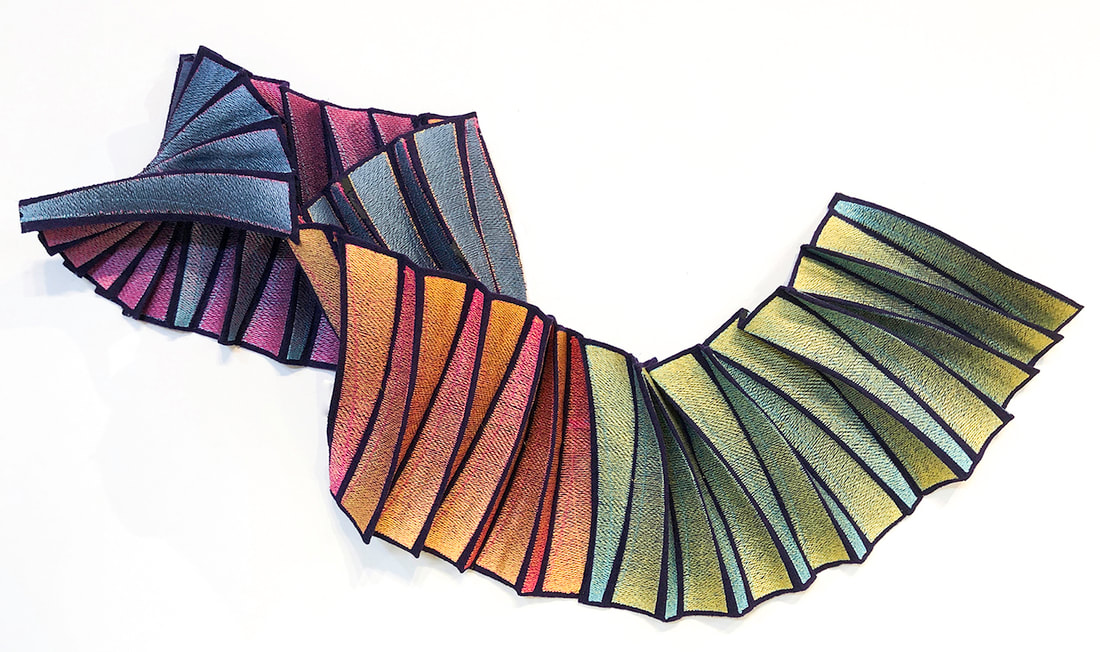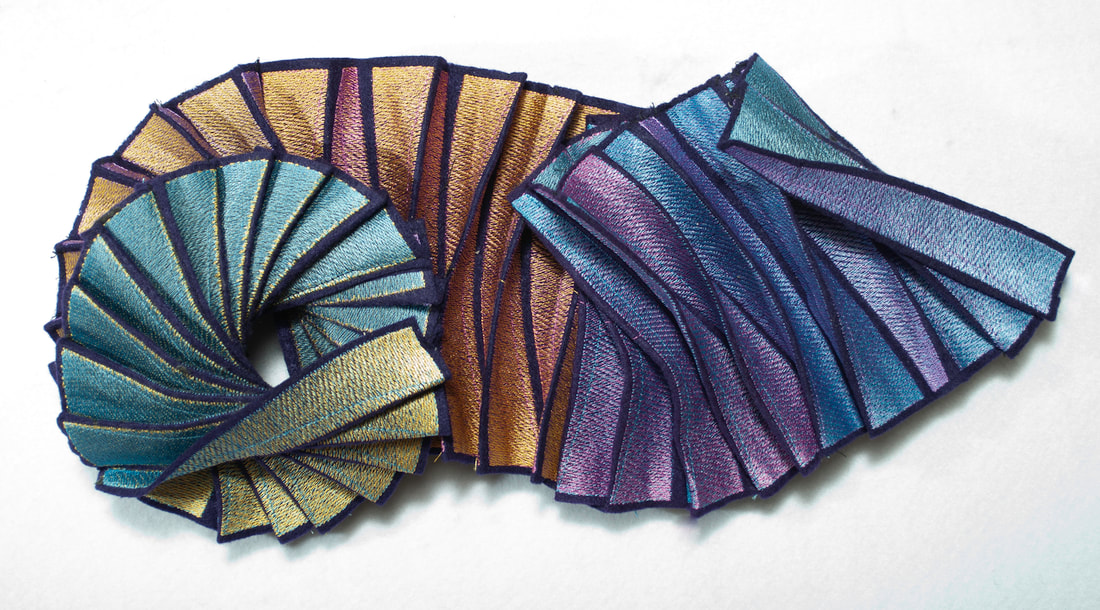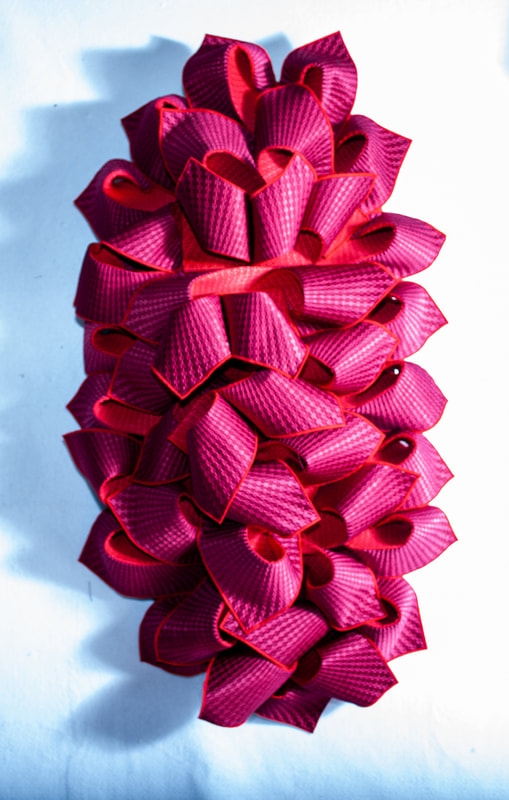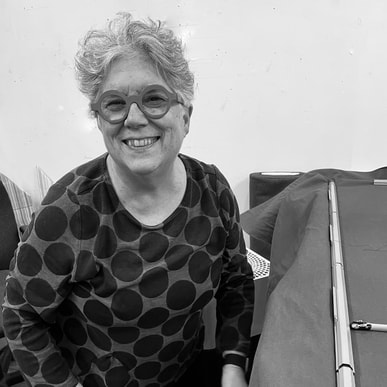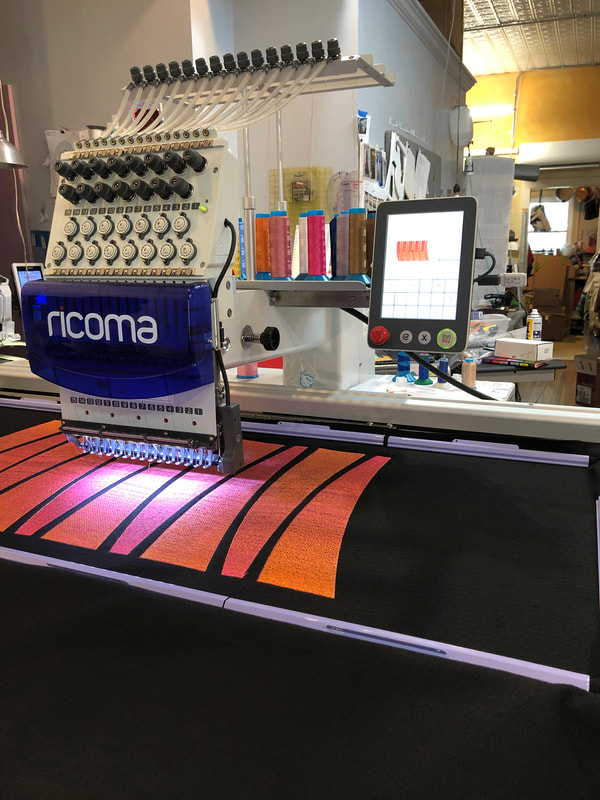Susan Hensel received her BFA from University of Michigan in 1972 with a double major in painting and sculpture and a concentration in ceramics. With a history, to date, of well over 200 exhibitions, 32 of them solo, twenty garnering awards, Hensel's desire to communicate stories through art continues to be a powerful motivator. Hensel's artwork is known and collected nationwide, represented in collecting libraries and museums as disparate as the Museum of Modern Art in New York and The Getty Research Institute with major holdings at Minnesota Center for Book Arts , University of Washington, Baylor University and University of Colorado at Boulder. Archives pertaining to her artists books will be available for study at the University of Washington Libraries in Seattle in 2017. In recent years Hensel has been awarded multiple grants and residencies through the Jerome Foundation, Minnesota State Arts Board, and Ragdale Foundation. Hensel's curatorial work began in 2000 in East Lansing, Michigan with the Art Apartment and deepened with ownership of the Susan Hensel Gallery. Hensel has curated over seventy exhibitions of emerging and mid-career artists from all over the United States and Canada.
Published on February 3rd, 2021. Artist responses collected in months previous.
What hurdles have you overcome this year and how have they affected your art practice?
The hurdles this year have been a combination of multiple external obstacles and internal confusion in response. I had begun the year on the cusp: changing my focus from the non-profit exhibition market to the commercial market and was beginning to receive positive responses. The global pandemic, cultural upheaval, toxic politics and the implosion of the art market have been huge disruptors. Nearly all my shows were cancelled this year. All my trips were cancelled. I cannot safely have a research/administrative assistant in the studio. In response to all the upheaval I have been studying and collecting art market info, working with marketers and coaches to get my thinking clear and always, always showing up to work in the studio, on schedule, every day. In response to the cancelled exhibitions, I began online exhibitions on my website, putting together special collections of work on a theme every two months, with curator essay and marketing plan, beginning with ABSTRACT STITCHES. Selfcare is key: Prayer, meditation, exercise, dance, journaling are important tools. The flow of creativity has been less reliable but not absent. I am more and more certain of why I do the work, more skilled and more experimental.
How has your art practice been affected by the pandemic?
I have less time in contact with the materials. The reality of Covid-time is not only the meaninglessness of TIME, but the necessity of taking care of one another remotely. I have many more meetings, all via ZOOM, than previously. My self-care routines are more time consuming because my need is higher. Administration time is much higher. I am doing all the research, data crunching, inventory management, archive management and photography that, in other times, would have been the job of an assistant. I am also building about 50% of my boxes, as the man who builds them is only available 1 day per week when he is in town and has to work in the garage for safety reasons. So that workspace will be closed down when the weather gets cold again. However, the importance of what I do is more needed than ever! My goal is to create radical beauty that makes people feel something. To make them stop, perhaps gasp and take a deep breath, to step out of their lives if only for a moment of pure sensation devoid of ego.
What support systems have you put in place to help keep your practice thriving amidst these unforeseeable circumstances?
As luck would have it, not even a month before we had to shut our down economy, and seemingly everything else,due to the pandemic, I hired a marketing firm to assist me cleaning up my social media and internet presence and plan for the future of my brand. As an artist it has been intensely important to have a critique group and another dear friend (Kim Matthews, who is also participating in the TWIRL project) with whom I can discuss the in’s and out’s of material art practice and the changing art market. The support of friends, from all walks of life has been very important throughout. The isolation of the studio life, in the best of times, needs relief. It is even more imperative now. While we may not be able to get together for coffee or a drink, we can have Zoom Coffee Hour and cocktails by phone.
What methods do you employ to stay resilient in your art practice? What tips would you recommend to other artists who find staying resilient difficult?
Always show up! That is the key for me. I keep to my schedule, 6 days a week, in the studio by 10 am. Out of the studio by 8pm. I may not be productive all the time, but I am there. I grow as much of my food as I can, which is new this year and so hopeful! I cook and eat healthy food, try not to drink too much wine. I walk the dog, dance or do yoga, meditate to keep my body and soul connected. I journal a lot which helps me not only identify the next steps in my work, but also helps me identify sabotaging thought processes. I keep regular hours for work and rest. Before bed most nights, I make a list of what I might need to do the next day. And on Sunday, I rest. NO STUDIO on Sundays...mostly. I read, I write, I cook, I watch movies. By taking a defined break, I usually enter the week with much more productive energy.
What have you learned about yourself as an artist this year?
I have learned that I am NOT quite as introverted as I thought I was. I have also learned that if I take care of my interior/ spiritual life, my external life and work will be fine…maybe not easy…but fine. My art and my life are not separate. They are one united experience. The artwork I provide to the world is the spiritual output of this unity. To paraphrase Teilhard de Chardin :‘We are not human beings in search of a spiritual experience. We are spiritual beings immersed in a human experience.’ I have learned to admit that sometimes I am frightened, or sad, or lonely, or angry or confused. Those are just feelings. They may not be fun feelings, but I need to feel them, sit with them a bit and then figure out how to move on. I continue to learn to live with the ambiguous and not so ambiguous losses of this unusual time, learning my “Viktor Frankl” lesson yet again: that while much can be taken from you, your freedom to choose how you will respond remains. And that is pretty marvelous!
What hurdles have you overcome this year and how have they affected your art practice?
The hurdles this year have been a combination of multiple external obstacles and internal confusion in response. I had begun the year on the cusp: changing my focus from the non-profit exhibition market to the commercial market and was beginning to receive positive responses. The global pandemic, cultural upheaval, toxic politics and the implosion of the art market have been huge disruptors. Nearly all my shows were cancelled this year. All my trips were cancelled. I cannot safely have a research/administrative assistant in the studio. In response to all the upheaval I have been studying and collecting art market info, working with marketers and coaches to get my thinking clear and always, always showing up to work in the studio, on schedule, every day. In response to the cancelled exhibitions, I began online exhibitions on my website, putting together special collections of work on a theme every two months, with curator essay and marketing plan, beginning with ABSTRACT STITCHES. Selfcare is key: Prayer, meditation, exercise, dance, journaling are important tools. The flow of creativity has been less reliable but not absent. I am more and more certain of why I do the work, more skilled and more experimental.
How has your art practice been affected by the pandemic?
I have less time in contact with the materials. The reality of Covid-time is not only the meaninglessness of TIME, but the necessity of taking care of one another remotely. I have many more meetings, all via ZOOM, than previously. My self-care routines are more time consuming because my need is higher. Administration time is much higher. I am doing all the research, data crunching, inventory management, archive management and photography that, in other times, would have been the job of an assistant. I am also building about 50% of my boxes, as the man who builds them is only available 1 day per week when he is in town and has to work in the garage for safety reasons. So that workspace will be closed down when the weather gets cold again. However, the importance of what I do is more needed than ever! My goal is to create radical beauty that makes people feel something. To make them stop, perhaps gasp and take a deep breath, to step out of their lives if only for a moment of pure sensation devoid of ego.
What support systems have you put in place to help keep your practice thriving amidst these unforeseeable circumstances?
As luck would have it, not even a month before we had to shut our down economy, and seemingly everything else,due to the pandemic, I hired a marketing firm to assist me cleaning up my social media and internet presence and plan for the future of my brand. As an artist it has been intensely important to have a critique group and another dear friend (Kim Matthews, who is also participating in the TWIRL project) with whom I can discuss the in’s and out’s of material art practice and the changing art market. The support of friends, from all walks of life has been very important throughout. The isolation of the studio life, in the best of times, needs relief. It is even more imperative now. While we may not be able to get together for coffee or a drink, we can have Zoom Coffee Hour and cocktails by phone.
What methods do you employ to stay resilient in your art practice? What tips would you recommend to other artists who find staying resilient difficult?
Always show up! That is the key for me. I keep to my schedule, 6 days a week, in the studio by 10 am. Out of the studio by 8pm. I may not be productive all the time, but I am there. I grow as much of my food as I can, which is new this year and so hopeful! I cook and eat healthy food, try not to drink too much wine. I walk the dog, dance or do yoga, meditate to keep my body and soul connected. I journal a lot which helps me not only identify the next steps in my work, but also helps me identify sabotaging thought processes. I keep regular hours for work and rest. Before bed most nights, I make a list of what I might need to do the next day. And on Sunday, I rest. NO STUDIO on Sundays...mostly. I read, I write, I cook, I watch movies. By taking a defined break, I usually enter the week with much more productive energy.
What have you learned about yourself as an artist this year?
I have learned that I am NOT quite as introverted as I thought I was. I have also learned that if I take care of my interior/ spiritual life, my external life and work will be fine…maybe not easy…but fine. My art and my life are not separate. They are one united experience. The artwork I provide to the world is the spiritual output of this unity. To paraphrase Teilhard de Chardin :‘We are not human beings in search of a spiritual experience. We are spiritual beings immersed in a human experience.’ I have learned to admit that sometimes I am frightened, or sad, or lonely, or angry or confused. Those are just feelings. They may not be fun feelings, but I need to feel them, sit with them a bit and then figure out how to move on. I continue to learn to live with the ambiguous and not so ambiguous losses of this unusual time, learning my “Viktor Frankl” lesson yet again: that while much can be taken from you, your freedom to choose how you will respond remains. And that is pretty marvelous!
Find Susan Hensel on Instagram

